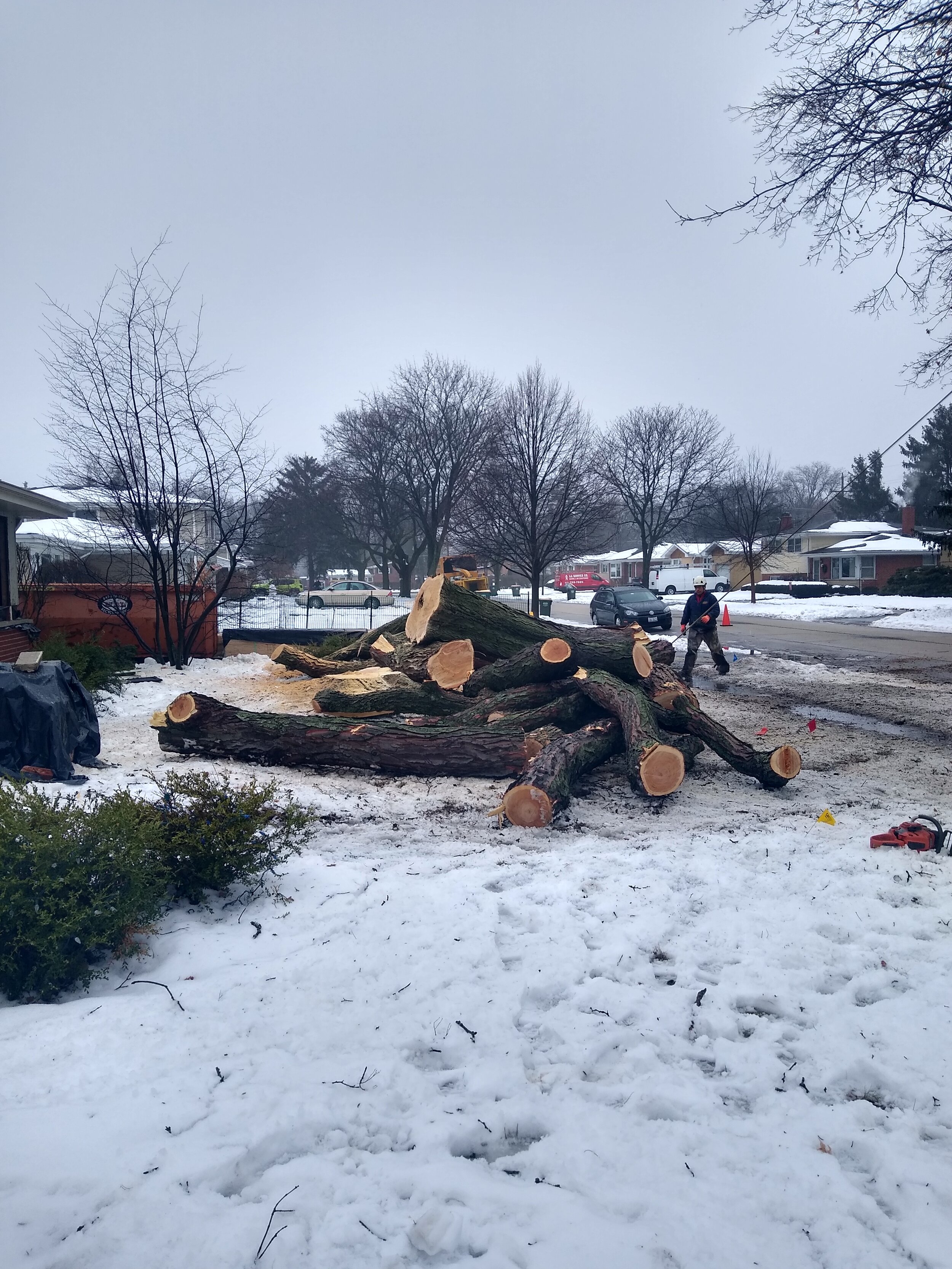Removing a tree isn’t always about removal…
(January 2020) One might ask how taking down a tree can be part of a sustainable landscape design. Another might ask “what’s the big deal? it’s your property… just take it out.”
Trees remove carbon dioxide from the atmosphere and replace it with oxygen. Trees passively shade and cool a house and any plants beneath when positioned in the right place. Some bear fruit and fiber. Others support hammocks, hold play forts, and provide hide-and-seek locations. They look nice. They belong.
The Happy Boolo Project is based upon a three-pillared philosophy: Community, Functionality, and Sustainability. One part doesn’t dominate the other — in a suburban context, sustainability can pose the most challenge — so the decision to take the giant honey locust down in our front yard was not made quickly nor without consideration of the impact, but it was made with all three pillars in mind.
For Community, we wanted a welcoming entryway that put our Happy Boolo-ness front and center for Drury Lane. That meant a new porch (and in a later post, a visit to Village Hall to seek a variance) and a walkway that, for the first time in the house’s 56 year history, directs visitors to a real front door. But the tree had been planted entirely too close to the house 40+ years ago and its roots had been buckling the driveway for the last five years.
For Functionality, we wanted to build up (versus out… a plus for Sustainability) in order to create more functional space for permanent work-from-home situations, which would place a portion of the solar PV panels on the new gabled roof within the tree’s shade as well as precariously beneath its boughs, which had been swaying more vigorously during thunderstorms.
So that leaves Sustainability. Once cut down, we ended its ability to sequester carbon in its biomass via photosynthesis. But I’d already thought deeply about its afterlife; how it would still serve our landscape and remain an heirloom of our house. In varying degrees, the green wood from locust trees in general is highly rot- resistant and takes a long time to decompose, which is why I had been harvesting the broomstick-straight, baseball-bat solid suckers from ours to use for uprights in my compost bins and fencing structures.
Once I’d considered taking it down, I at first wanted it milled into lumber for shakes for our patio’s pizza oven structure, but, with the advice of my arborist, landscaper, and interior designer, I landed on a three-sided mantel above our fireplace, open shelves for our kitchen, and lumber for our raised garden beds. In addition, the stump grindings and wood chips would be used as the walkways for the beds. So, to a large extent, the tree never left the property, but was just used in different ways. And large sections of the tree that can’t be milled can also be buried to return its carbon into the ground, sequestering it (which is technically different than chipping/shredding it and composting it, which actually releases carbon back into the atmosphere!)
On January 24, the day of its removal, the first thing the arborist noticed was the rotting center right at the base, so that made me feel a bit better that perhaps this was the right time, anyway.
The tree’s cords were transported to Horigan Urban Forest Products in North Chicago, where the milling took place. I provided the specifications and was lucky enough to be able to witness the milling on-site.







